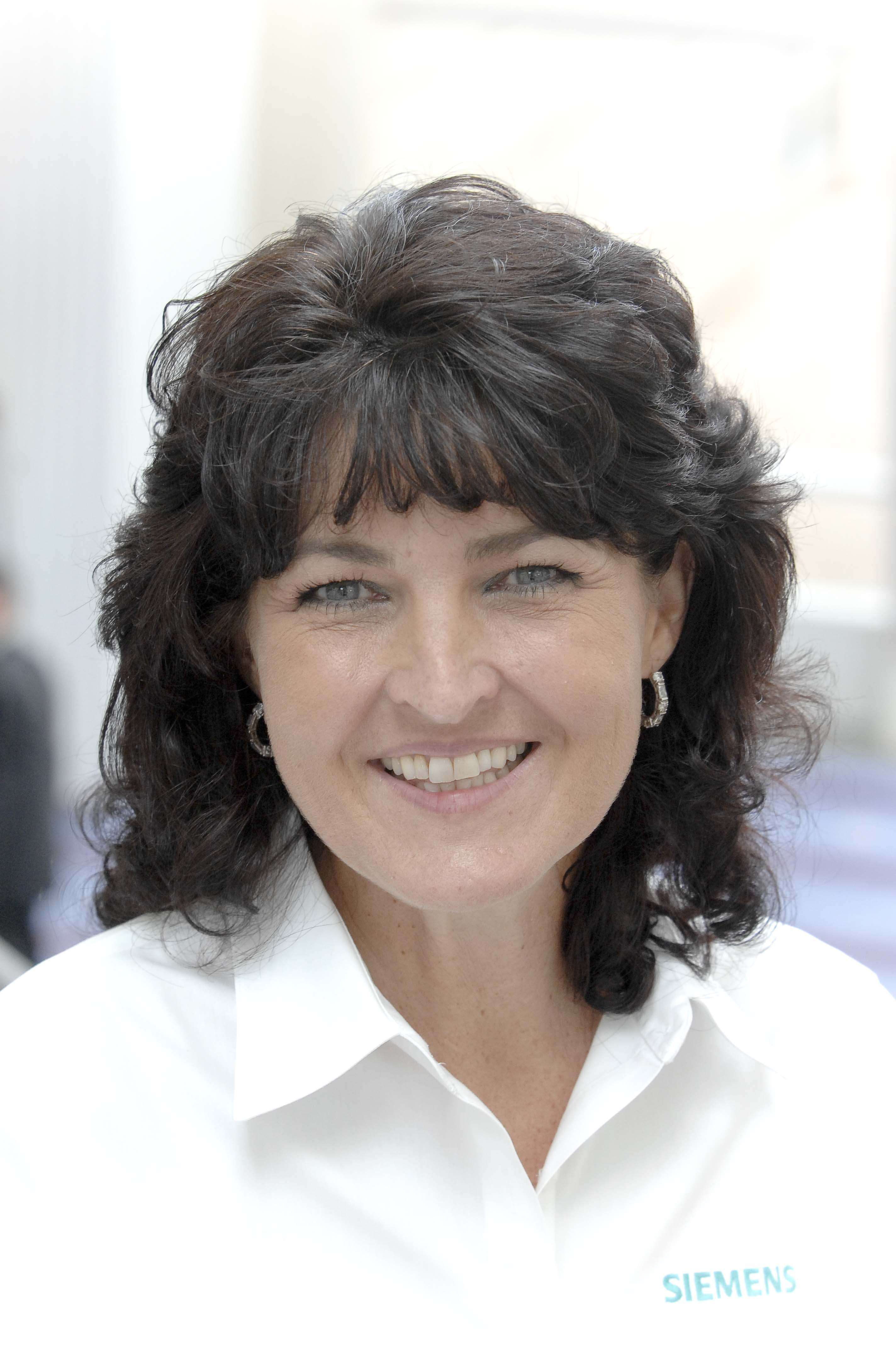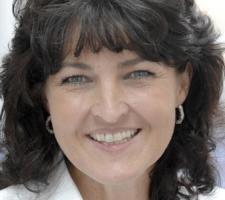
Christy Peebles of Siemens Industry, Inc. talks about standards development and what more the US could be doing to accelerate the process.
While the US has achieved an appreciable level of success when it comes to implementation of standards-based systems at the urban and intersection control levels, the overall standards implementation effort is not progressing at anywhere near a level commensurate with the size of the country and its population, says Christy Peebles, business unit manager with
She attributes the situation to a number of factors: "There's a big element of 'Not Invented Here' syndrome and a huge resistance among some traffic engineers to entertain the 'new-fangled' and unfamiliar. Perhaps standards adoption will accelerate with the generational change we are experiencing in the US. We are seeing the next-generation engineer reaching the decision level within municipalities. To this generation, antiquated technology is unacceptable. They are not of the mindset to keep things they way they are just because they have always been that way. They are embracing change and specifically technology. Actually, they expect it.
"Another potential accelerant is the greater visibility which ITS has started to achieve in the last few years and particularly since the arrival of the Obama Administration: economic downturn and government efforts at stimulation have made the public realise that our national infrastructure is collapsing. Our solution to congestion has been to build new roads but it appears that we have reached our limits."Peebles subscribes to the notion that the US risks falling behind the rest of the world when it comes to ITS systems development (see 'Just crawling along', ITS International March-April 2010, pp.NA1-NA2): "In fact, I think it already has. Speaking as an employee of Siemens, a company which is headquartered in Europe and has a large international presence, I just don't see leading-edge technologies in the US like we have deployed in the rest of the world.
"We do not have the ability to look at things in a holistic sense. For example, the US does not have a minister of transportation who has the authority to drive policy on a national basis. The Federal Government's ability to implement change is predominately limited to funding. If a state chooses to implement technology which does not comply with USDOT standards, they may not be eligible for federal funding. At the next level down, towns and cities have their own governments which, again, go without state-level funding if they want to go their own way.
"In many respects it's the long way of implementing change - as a nation, we guard our right to independent determination even though at times it could be perceived as detrimental."
Nevertheless, she continues, structural changes to the government are not necessary to bring the ITS technologies which are available in the rest of the world to the US. What will make a difference is shifting how ITS is perceived: "As manufacturers we need to focus on designing technology that delivers benefits to the consumer, not spending our time arguing over standards."
One way to expedite the change process is to focus standards development on what she terms. "common message sets" .
"Take NTCIP as an example. While the implementation of NTCIP may have been a little slower than anticipated, the fact that this standard defines a common message set instead of specific technology means the natural change process has occurred. The Federal Government in the US has a difficult time regulating what it rolls out but it realises over time that things can come to be recognised as a benefit. So while it might not get overnight acceptance or compliance, economic factors - the advantages to manufacturers and users of having compliant products and common message sets" - will drive success. It means we don't end up with a 'thou shalt' situation. Instead, we have an environment that welcomes the standard."
Standards implementation
Whether standards implementation should be top-down or bottom-up is very much dependent on the need, Peebles feels: "I don't think there's necessarily a one size fits all answer. The NTCIP roll-out was nationally top-down but in reality was derived from a bottom-up-approach. The challenge with bottom-up is it takes longer to get everyone in agreement so there needs to be fundamental rethink of how we go about top-down in the US."Here, the classic 80/20 rule applies, she says.
"We should start by asking ourselves what the minimum requirements are and then work on iterations, rather than continually look to come up with the one-size-fits-all answer. We should be looking for control and consistency, common message sets, rather than hanging on for the right answer. So, can we get done 80 per cent of what we need to get done with just 20 per cent of the rules in place? An inordinate amount of time goes into working out what to do with that rarely occurring 20 per cent when what we should be going after is the minimum that will keep the road user driving from state to state without an awareness of things having changed.
"Our standards definition process is far too cumbersome because it attempts to do everything by consensus and encompass too much at once. ATC roll-out is a case in point: it's been around since 1999 and is only now making headway. The argument of OS 9 versus Linux-based technologies strangled the roll-out. This is the problem when developing standards around technology, the 'how' instead of the common message set which defines the 'what' and the 'when'.
The 'message set' here, according to Peebles, needs to convince people to move away from being hung up on the technology.
"ATC got hung up on technology, whereas what a standard should be looking to do is generate interoperability and improve safety, to get away from proprietary equipment. We need standards for 'what' and 'when', not 'how'. Look at it in the context of a business: at the directorial level there needs to be a perception of 'We need X to happen'. It's then left up to the functional departments of the organisation to make it happen, rather than be told to the nth degree how to do it.
"Look at the standard US traffic control cabinet: NEMA dictates how to build a cabinet instead of defining the interoperability requirements. Since we focused on the 'how' instead of the 'what', I have a plant that produces equipment with technology from 1970. It's like stepping into a time machine every day when I walk out there. We all know that a PC board can produce the same results as wired point-to-point terminal blocks; we ship NTCIP-compliant cabinets to China using this technology. This is why FHWA now requires systems engineering for all standards development, including user needs and requirements. Because of this, the upcoming ITS version 2.0 cabinet will be radically smaller, lower power, and operate on low voltage to eliminate shock hazard, while preserving customer software investment by carrying the existing ITS cabinet architecture forward."
5.9GHz development
Although Peebles perceives many advantages to 5.9GHz standards, she feels that this may also be digging itself into a rabbit hole by focusing too much on the technological solution: "There are applications where 5.9 is the choice, in particular the very low-latency safety ones. But there are also other applications that would be adequately served by, wireless, 3 or 4G telecommunications. We should be getting on and deploying those applications now; instead of stagnating progress by waiting for the 'whole' technology which isn't ready yet."But are we just sitting around waiting for 5.9 to happen? No, I don't think we are. It's a good solution but I don't think it's stopped anything.
"The market is continuing to find alternatives, even though 5.9 will give you the necessary timings for some of the time critical V2V and V2I applications. Am I content for competitive technologies and standards to co-exist? Yes. I really think they should.
"One of the most exciting dynamics in the US market at the moment is the potential for traffic management technology to skip a whole generation. The antiquity of some of the systems out there means that there is the potential to skip the whole hard-wired generation and go straight to next-generation wireless and so on.
"We should be cognisant of fear but we shouldn't let it control us," she continues. "The economics of most things work themselves out - pretty much anything is only efficient up to a certain point. But the speed of change is sometimes glacial - hence those terminal blocks. Change will happen, so there's little point in fighting it.
"One of the biggest things we can do is get people out of silos. Siemens has this concept of Integrated Cities, where transport, transit, the emergency services all work in unison rather than individually. We should be looking to do the same with NEMA, the ITE, AASHTO, the FHWA - ATC was a great example of a cross-functional team pulling something together successfully. But go after that 20 per cent and get away from the tendency to overcomplicate."
External influences
Cooperative mobility and infrastructures bring new players into the ITS sector. The automotive and consumer electronics sectors have started to make their presences felt in a major way in the last few years. Consumer interest, Peebles states, will have a significant shaping effect."The consumer drive is going to be huge and once they realise what's to be had there'll be no stopping demand. That's what the World Congress in Orlando next year will be all about: increasing public awareness.
"The automotive industry is huge compared to the ITS, and the automotive industry will not be held back. I can see a situation, in terms of standards, where the automotive companies will say, 'Get on board or we'll go round you'. We have heard comments like, 'peace has broken out among the car companies'; by adopting the
Taking a lead
In theory, it is the Federal Government and the"Focus on interoperability," she concludes. "The generational shift we'll see over the next few years is going to be very interesting. Is it going to result in a new level of collaboration? Well, you'll certainly see a greater female influence - that might help.
"Just ask yourself this: if the standardisation efforts we saw started in the 1990s were to be started today, what would the team behind it look like and what would be different as a result?"







